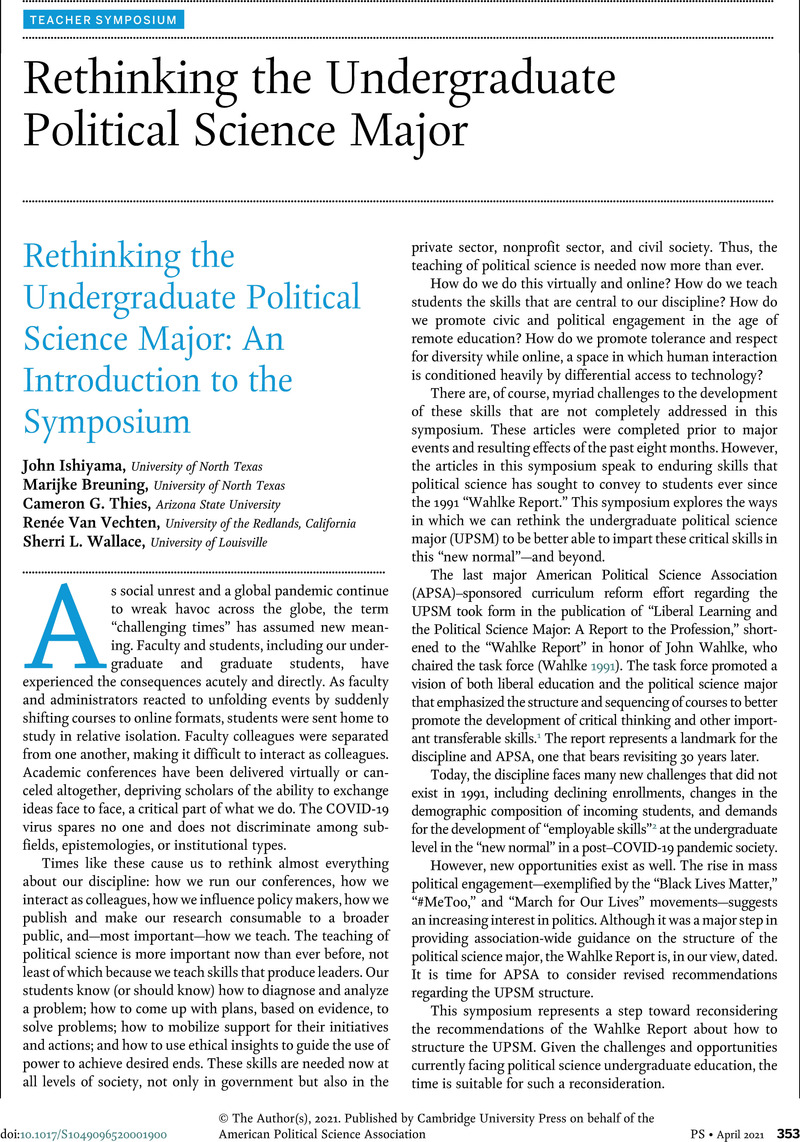Crossref Citations
This article has been cited by the following publications. This list is generated based on data provided by Crossref.
Solop, Frederic I.
Anderson, Haley N.
Barsky, Christina
Schnurr, Emily
and
Witlacil, Mary
2022.
Introducing Client-Focused Research (CFR) Projects into the Research Methods Curriculum: Key Considerations for Political Science Instructors.
Journal of Political Science Education,
Vol. 18,
Issue. 3,
p.
284.
Glover, Robert W.
and
Gary-Allen, Courtney
2024.
Civic Pedagogies: Teaching Civic Engagement in an Era of Divisive Politics.
p.
145.



